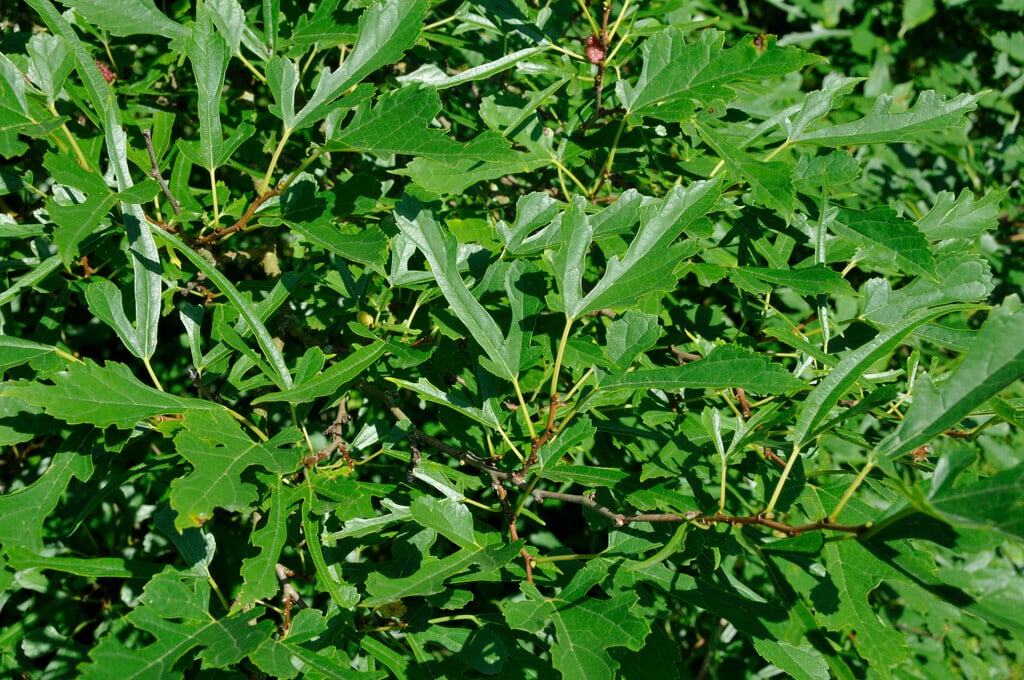Morus alba 'Laciniata'
white mulberry 'Laciniata'
A large shrub to medium-sized deciduous tree, often multi-stemmed, with an open habit and tangled branches which form a zig-zag shape when young. Deeply lobed, dissected dark green leaves with a long, thin point, turn yellow in the autumn. Inconspicious pale green catkin-like flowers appear in the spring, followed by small, creamy-white to pale purple, edible fruits
Size
Ultimate height
4–8 metresTime to ultimate height
20–50 yearsUltimate spread
2.5–4 metresGrowing conditions
Moisture
Moist but well–drained, Well–drainedpH
Acid, Alkaline, NeutralColour & scent
| Stem | Flower | Foliage | Fruit | |
| Spring | Green | Green | ||
|---|---|---|---|---|
| Summer | Green | Cream White Purple | ||
| Autumn | Yellow | |||
| Winter |
Position
- Full sun
Aspect
South–facing or West–facing
Exposure
Sheltered Hardiness
H6Botanical details
- Family
- Moraceae
- Native to GB / Ireland
- No
- Foliage
- Deciduous
- Habit
- Bushy, Spreading branched
- Genus
Morus are deciduous trees and shrubs with broadly ovate, sometimes deeply lobed leaves and inconspicuous green flowers followed by usually edible white, red or black fruit
- Name status
Accepted
How to grow
Cultivation
Grow in moist, humus-rich, fertile soils with shelter from cold, dry winds. See mulberry cultivation
Propagation
Propagate by semi-hardwood cuttings in mid-summer
Suggested planting locations and garden types
- Architectural
- Cottage and informal garden
- Edible fruit
Pruning
Pruning group 1, prune in late summer to early winter to avoid bleeding
Pests
Generally pest-free
Diseases
May be susceptible to mulberry leaf spot, mulberry canker, coral spot, powdery mildews and honey fungus (rarely)
Get involved
The RHS is the UK’s gardening charity, helping people and plants to grow - nurturing a healthier, happier world, one person and one plant at a time.
